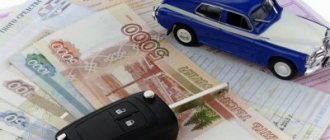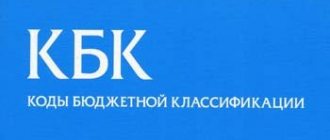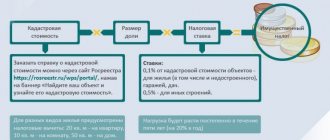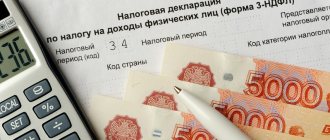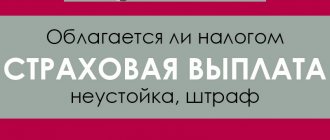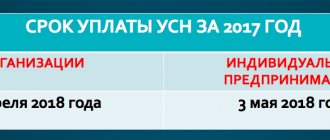VAT is a type of indirect tax that is paid on the sale of most goods, performance of work and provision of services. Depending on the object of taxation, the rate can be 0, 10 or 18%. The tax is included by the seller in the cost of the product or service in the form of an extra charge; he subsequently transfers the tax to the budget - part of the proceeds. But for VAT under the simplified tax system, special rules apply.
What is VAT?
VAT (Value Added Tax) is an indirect type of tax that is levied on a wide range of services and goods. It is calculated for the benefit of the country's budget from the surplus value. The final buyer pays tax on the entire purchase price, but the receipt of funds begins earlier, since the calculation occurs at the production stage, being added to the cost of raw materials and creation work, it is paid at all stages.
Attention
Russian legislation assumes a VAT rate of 18%, there is also a preferential rate of 10% and the possibility of a complete exemption from payment.
VAT may resemble sales or turnover tax; it is also added to the cost of goods. But unlike what was mentioned, in a situation where the buyer pays VAT, that is, buys goods whose price includes tax, the seller has the opportunity to deduct from this amount that was paid by the buyer the amount that was paid as the same tax when purchasing goods or raw materials (or using services) from a supplier. That is, the tax in practice turns out to be indirect, and it is the end consumers who pay it. In payment documents, VAT on goods appears as a separate line. This system was not developed by chance, and its use allows you to achieve several goals at once:
- Tax payment is distributed across the stages of production and commerce processes, which eliminates the cascading effect of multiple collections. This eliminates VAT overpayments, which could be very significant.
- The tax is paid by several payers, the responsibility is distributed. Evading VAT on goods using simple methods is impossible; the payment will still go to the budget - if one of the participants in the process evades it, it will still be withdrawn at subsequent stages.
- As part of the current economic situation, it removes national taxes on exports, allowing you to receive an indirect tax.
We carry out sales without VAT
“How can you escape from VAT when selling goods?” – accountants have wondered more than once. And it’s not in vain. Such an opportunity was found.
Although our legislators recently reduced the VAT rate, the desire to avoid this tax among company managers has not weakened. Accountants also know about it. The main thing is to place the accents correctly. Since sales are taxed, the task is to give away the goods, receive money for it, and so that this is not considered a sale.
And then a bright head came up with the idea: to sell the goods under the guise of a contribution to the buyer’s authorized capital. According to Article 39 of the Tax Code, this operation is not a sale, and therefore you will not have to pay VAT on it.
So, the company contributed to the buyer’s authorized capital. The next move is her withdrawal from the founders. The seller will only receive his share in monetary terms. The law allows this (see, for example, Article 94 of the Civil Code of the Russian Federation).
So in this case, the seller can increase the price of the goods by the 18 percent VAT rate, without having to share the proceeds with the state. Now the details.
Step-by-step strategy
Let’s say right away that this combination is applicable if the buyer does not need a VAT tax deduction. In other words, he does not pay this tax at all. The buyer can be an organization on a “simplified” or “imputed” basis or exempt from tax under Article 145 of the Tax Code.
The fact is that the scheme veils the implementation, and accordingly there can be no talk of any invoice. Therefore, the tax cannot be offset. When the buyer does not pay VAT, it makes no difference to him whether the tax amount is included in the invoice or not. Let's look at the diagram step by step.
Step 1. The seller contributes the goods to the authorized capital of the buyer company. At this stage, pay special attention to documenting the operation. Immediately before shipping the goods, the following must be drawn up:
- minutes of the meeting of shareholders (participants) on the entry of your organization into the founders of the purchasing company;
- memorandum of association;
- a new edition of the charter of the purchasing company indicating the new founder.
In the new charter, it is advisable to literally write the following: “to a company participant who has submitted an application to leave the company, the actual value of the share is paid within five days from the date of filing such an application.” Otherwise, according to the law on limited liability companies, the buyer has the right to give him the money for his share right before the end of six months of the next year (Article 26 of the Law).
Changes in the composition of the founders must be registered with the “native” tax office.
To do this, provide her with the above documents, an application in form No. P13001, certified by a notary, as well as a receipt (payment order) for payment of the state duty for 2000 rubles.
Within five days, inspectors are required to make changes to the state register. So, now the seller company is a full-fledged founder of the buyer company. They agreed upon the amount of the commodity contribution to the authorized capital and recorded it in the constituent documents. In fact, it constitutes the cost of the product along with the markup. That is, if you have a product with a cost of 50 rubles, then, by agreement with your partner, you can make it as a contribution of 200 rubles. Moreover, these 200 rubles will appear in the tax and accounting records of the receiving party. There is only one limitation. If the deposit amount exceeds 20,000 rubles and the recipient of the property is a limited liability company, its price must be confirmed by an independent appraiser. This provision is contained in Article 15 of the Federal Law of February 8, 1998 No. 14-FZ. When the recipient is a joint-stock company, the appraiser is involved regardless of the amount of his contribution (Article 34 of the Federal Law of December 26, 1995 No. 208-FZ “On Joint-Stock Companies”).
Step 2. The seller leaves the founders. To do this, he submits an application to leave the society. The exit of the founder must also be registered with the tax office. How to do this is described above.
The fact that the selling company will receive its share in the charter in money and not in goods must be indicated in the protocol. In this case, there is no need to calculate the actual value of the share. After all, the value of net assets during its short “founding” did not change.
Where do taxes go?
What do we have in the end? The company sold the goods but did not pay VAT. The goal has been achieved. Previously, it was not recommended to use such a scheme, since officials demanded that tax be paid to the budget, which had previously been accepted for offset on the property being sold. They say that it ceases to be used in activities subject to VAT. The company had to fight for its interests in court. The Supreme Arbitration Court reasoned with the tax authorities. After the release of the resolution of the Supreme Arbitration Court of the Russian Federation dated November 11, 2003 No. 7473/03, debates on this issue no longer arose.
As for income tax, you will have to pay it. In this case, the tax base will be considered the difference between the actual cost of the property and the amount of money that the seller received after ceasing to be the founder (clause 4 of Article 251 of the Tax Code of the Russian Federation).
Note that taxable profit will arise precisely after the seller leaves the founders. Not earlier. Roughly speaking, if you contribute property worth 2 rubles as a contribution to the authorized capital of 100 rubles, this will not be considered income. This is enshrined in paragraph 1 of Article 251 of the Tax Code. For clarity, we will show how the circuit works using an example.
Example
Aktiv decided to sell its production equipment for RUB 10,620,000. (including VAT – RUB 1,620,000). Its initial cost is 6,000,000 rubles, the residual cost is 4,000,000 rubles. “Passive” does not pay VAT.
Situation 1. Equipment is sold as usual.
“Passive” transfers 10,620,000 rubles, from which “Active” will pay VAT to the state in the amount of 1,620,000 rubles. The seller's income tax will be:
(RUB 10,620,000 – RUB 1,620,000 – RUB 4,000,000) x 24% = RUB 1,200,000
The total amount of tax payments of “Asset” is equal to:
RUB 1,620,000 + 1,200,000 rub. = 2,820,000 rub.
It turns out that the income from the sale of equipment will be:
RUB 10,620,000 – 2,820,000 rub. – 4,000,000 rub. = 3,800,000 rub.
Situation 2. Equipment is sold as a contribution to the authorized capital.
In order to interest the buyer to participate in this scheme, Aktiv decided to reduce the price of the goods to 10,000,000 rubles. So, he invests equipment in the authorized capital of Passiv. By agreement with an independent appraiser, the contribution was valued at RUB 10,000,000.
The Aktiva accountant made the following entries in accounting:
Debit 01 subaccount “Disposal of fixed assets”
Credit 01
– 6,000,000 rub. – the initial cost of the equipment is written off;
Debit 02
Credit 01 subaccount “Disposal of fixed assets”
– 2,000,000 rub. – the amount of accrued depreciation of equipment is written off;
Debit 58-1
Credit 01 subaccount “Disposal of fixed assets”
– 4,000,000 rub. – the transfer of equipment is reflected as a contribution to the authorized capital (at residual value);
Debit 58-1 Credit 91-1
– 6,000,000 rub. – the excess of the cost of equipment agreed upon by the founders over its residual value is taken into account.
Next, “Aktiv” leaves the founders and receives its share (10,000,000 rubles) in money. He does not pay VAT. The amount of income tax from leaving the founders will be:
(10,000,000 rub. – 4,000,000 rub.) x 24% = 1,440,000 rub.
Income from the sale of equipment is equal to:
10,000,000 rub. – 4,000,000 rub. – 1,440,000 rub. = 4,560,000 rub.
As you can see, despite the fact that the price of the equipment was reduced by 620,000 rubles, Aktiva’s tax payments decreased by 1,380,000 rubles. (2,820,000 – 1,440,000). And this is more than in the first situation.
We see that the opportunity not to pay VAT entails certain inconveniences for the purchasing company: complicated documentation, the lengthy nature of the procedure for purchasing goods, the need to register constituent changes. However, as noted in the example, all these “corners” can be smoothed out with some discount on the product. In addition, the disadvantage of the combination is that it is unlikely that it will be possible to sell the goods in this way many times.
Periodic joining and leaving of the founders will look, at least, strange. This scheme is best used once, maximum twice, when the organization sells a very expensive product.
Moreover, there must be a trusting relationship with the buyer, because the seller can “dump him” and not leave the founders.
V. Serednyakov, auditor Material provided by the magazine “Practical Accounting”, No. 4 2004
What goods are not subject to VAT?
There are a number of categories and areas of goods that are not subject to VAT. These are, first of all, areas of social orientation, as well as socially significant goods that should not be provided within the framework of normal market competition due to the fact that this will affect certain segments of the population. Also, this tax is not relevant for a number of business areas, for a sector that requires development and support. By imposing VAT on goods, an import substitution program is being implemented, making it possible to push foreign manufacturers out of the market, providing a place for our own. Moving on to specifics, it is worth listing the following goods that are exempt from payment within the scope of goods and services provided by them:
- Food and related products.
- Food for medical, educational institutions, direct producers.
- Stamps, postcards with stamps, mail envelopes.
- Scrap metal and metal waste, ores, valuable metals and their concentrates.
- Any goods in duty free.
- Diamonds that have not undergone treatment.
- Precious coins that are not accepted for payment.
- Medical products according to the existing list.
- Goods for free assistance.
- Religious goods and literature.
Which goods are not subject to VAT upon import?
Tax must also be paid when importing products into the country for commercial purposes. In this sector there are also categories exempt from payment, and their full list can be seen in Art. 150 Tax Code of the Russian Federation. As an example of goods exempt from payment, one can cite technological equipment and spare parts that are not produced in Russia even within the framework of analogues. The following goods are also completely exempt from VAT when imported:
- Medicines that have no analogues, materials for their production.
- Consumables for scientific purposes that have no domestic analogues.
- Life-saving medical supplies.
- Any cultural values.
- Breeding agricultural animals, embryos.
- Items within the scope of gratuitous assistance.
- Seafood produced by domestic companies.
- Currency, securities - with the exception of collecting purposes.
- Rough diamonds.
- Objects of space activities.
- Printed products for exchange between museums and libraries.
- Goods produced by Russian companies operating abroad.
- Vessels for registration in Russia.
Does an individual entrepreneur pay VAT under the simplified tax system?
The special tax regime was introduced in Russia to provide support to small businesses. This format of work provides significant benefits when paying taxes. According to Article 346.11 of the Tax Code of the Russian Federation, “simplified” can be combined with other regimes. This applies, in particular, to UTII.
The simplified tax system is allowed to be used by entrepreneurs who employ no more than 100 employees. The income of an individual entrepreneur and the residual value of fixed assets should not exceed 150 million rubles. in a year.
The special mode exists in two formats. In the first, all income received by an entrepreneur is subject to a 6% tax. The second has the formulation “income minus expenses”; a tax of 15% is paid on the difference between financial receipts and expenses. Accordingly, if a businessman’s expenses are quite high, it is more profitable for him to use the second type of “simplified”.
Important! Each individual entrepreneur has the right to choose the type of simplified tax system himself, if, according to other criteria, he can use this regime.
The main advantages of the simplified tax system include a large number of permissible types of activities (exceptions are specified in Article 346.12 of the Tax Code), submission of reports once a year and exemption from a number of taxes:
- personal income tax;
- On property;
- VAT.
This is where many individual entrepreneurs see an important advantage of this special mode. The simplified tax system is also beneficial due to the possibility of reducing advance payments due to insurance premiums transferred for the quarter. Individual entrepreneurs have the opportunity to reduce the single tax by half, and businessmen without employees can take into account the full amount of contributions. With small incomes, the latter sometimes do not have to pay tax at all. All this applies to the “simplified” tax with a 6% tax.
In terms of reporting, the simplified tax system also has its benefits. For tax accounting, a special book is created - KUDiR. Such merchants are not required to keep accounting records. The reporting period for individual entrepreneurs using the simplified tax system is a quarter, but the declaration is submitted once a year. However, at the end of the quarter, advance payments must be calculated and paid. Calculations are made on the basis of KUDiR. Payments are calculated as a cumulative total from the beginning of the year.
How to calculate VAT on a product?
In order to calculate VAT on a product of any amount, there is a simple mathematical formula.
NB × Nst / 100
NB - tax base, total amount, Nst - rate, which can be equal to 18 or 10.
If it is necessary to calculate VAT, including in order to isolate the tax from the total amount, use the following formulas:
C/1.18 × 0.18 (or × 0.10)
C / 1.10—if the tax rate is 10%,
C - total amount including VAT.
When calculating the amount including VAT without first calculating the tax, the following formula is used:
C = NB × 1.18 (or 1.10)
NB - tax base, the total amount excluding tax.
VAT compensation in the estimate
Businessmen who perform work and use the simplified tax system sometimes enter into contracts with customers who use OSNO. This often happens, for example, in construction. All stages of the work, labor costs, and costs of materials are described in detail in the estimate documentation.
If there is no VAT in the estimate, problems may arise during mutual settlements between the customer and the contractor. The customer does not have the right to deduct unaccounted tax; the contractor cannot receive compensation for costs of materials and VAT.
All costs for construction work are divided into groups, their amounts are indicated without VAT, and the tax is entered in the final column. The VAT column cannot be excluded from the estimate, but it can be replaced with the column “costs of VAT compensation under the simplified tax system.”
There is a special formula to calculate such costs. Let's look at it using the example of construction services. She looks like this:
(MAT + (EM - ZPM) + HP × 0.1712 + SP × 0.15 + OB) × 0.20
- MAT is the amount of costs for performing work;
- EM - costs of operating machines;
- ZPM - remuneration for drivers;
- HP - volume of overhead costs;
- SP - the amount of estimated profit;
- OB - clean operation of equipment;
- 0.20 is the tax rate.
This approach ensures VAT reimbursement in the estimate under the simplified tax system.
Important! From 2021 there have been changes to the VAT rate. From 18% it increased to 20%. At the same time, a new declaration form for this tax was introduced. Submitting an old-style declaration is considered a lack of reporting and is punishable by penalties.
To confirm the right to work without VAT, a simplified worker may need an appropriate document. This right is confirmed by:
- A copy of the notification from the tax office about the acceptance of documentation for the transition to this regime;
- A copy of the first sheet of the declaration with the tax stamp;
- Letter from the Federal Tax Service in format 26.2.-7.
To receive the letter, you need to send a request to the inspection in free form.
Who is exempt from paying VAT?
Art. 149 of the Tax Code of the Russian Federation emphasizes that it is not the organization that is exempt from taxes, but only certain operations. The list of actions falling under the exemption is closed, and if the company’s work is related to the implementation of the listed operations, then it will not have to pay VAT. The list of activities that are exempt from payment includes the sale of medical goods of domestic and imported origin, shares in the capital of a company, and securities. Rights to inventions, industrial designs, databases, know-how, and results of intellectual activity are sold without VAT. Payments within banking transactions are excluded.
IMPORTANT
According to Art. 149 of the Tax Code of the Russian Federation, there are certain conditions that will allow you to obtain an exemption - licenses and other supporting documents. In order to implement the exemption, it is necessary to ensure compliance with the conditions under Art. 149 of the Tax Code, however, it is not necessary to send a notification to the tax authorities or issue an exemption.
As specified in paragraph 3 of Art. 149 of the Tax Code of the Russian Federation, operations always have the possibility of refusal under clause 5 of Art. 149 of the Tax Code of the Russian Federation, and such a measure can bring certain benefits, allowing the payer not to keep separate records and apply tax deductions.
Additional Information
To be able to use this approach, you should apply before the first day of the tax period and refuse or suspend the VAT exemption on goods. In order to do this, you must submit an application to the Federal Tax Service. At the same time, you can refuse both in relation to all operations, and for one or several; in this regard, any decisions are open without exception. According to the law, refusal is allowed for a year; shorter periods are not considered.
Calculation example
To understand all the intricacies of calculation, it is worth considering a practical example of calculating VAT on a product. Let’s say that a certain enterprise sells piece building materials, the cost of which per unit of goods is 55 rubles, without including tax in the price. Since we are talking about building materials, tax must be paid, the rate will be 18 percent. It is necessary to calculate VAT and the total cost of the shipment when taking this tax into account.
First, you need to calculate the total cost of the goods without VAT, and if there are 100,000 pieces in the batch. goods for 55 rubles, then it will be 5,500,000 rubles. Next, you need to calculate VAT: 5,500,000 × 18/100 = 990,000 rubles. By adding VAT to the cost of the batch, you can get an amount of 6,490,000 rubles.
For your information
In this case, when filling out the documents, you must indicate that without VAT the product costs 5,500,000 rubles, 18% VAT - 990,000 rubles, with VAT - 6,490,000 rubles. This data will be quite sufficient.
Features of interaction
What are the disadvantages for the counterparty?
On the one hand, when purchasing goods from a company under a special regime, an organization using OSNO can take into account the entire amount of costs when calculating income tax. But on the other hand, she will not be able to receive VAT compensation in the future for the amount of the purchase from the budget. For example, a company bought air conditioners for the office for 100,000 rubles. If the invoice was issued with VAT, then she has the right to compensate 18,000 rubles from the budget. from such a purchase.
If the company purchased air conditioners from a simplified company, then it will not be able to compensate for anything.
It turns out that a purchase from a company without VAT costs buyers 18% more than a similar purchase from a seller on OSNO. After all, simplifiers usually keep prices at approximately the same level as companies in the general regime.
Therefore, VAT payers prefer to work with other companies on OSNO for economic reasons.
Possible errors in calculations
When calculating VAT on goods, various errors may occur, and the most common of them are the following. Sometimes a reduced interest rate is used in a situation where it is legal to use the main one. In other cases, partial payment that has already been received is not taken into account, or VAT is calculated late. In goods exchange transactions, it happens that VAT is deducted without being transferred to the supplier. Often tax is assessed incorrectly due to incorrect invoices.
Additional Information
Considering the importance of value added tax and serious fines when violations are detected in this regard, it is advisable to pay due attention to the correctness of the calculation, using the labor of exclusively qualified and competent specialists who can confidently cope with such tasks.
VAT accounting entries
Working with VAT on goods becomes the concern of an accountant, one of his most important work tasks. When working with accounting, it should be noted that according to the modern system of accounts for VAT, two points are calculated . This is account 19, which allows you to open an arbitrary number of subaccounts. This column is called VAT on acquired material assets; subaccounts can be opened at any time. The second is account 68 Calculations for taxes and fees, where it is allocated as a subaccount.
Additional Information
It is necessary to reflect and calculate VAT in accordance with all rules when selling all goods that are subject to this tax, reflecting the details using accounting tools.
In what cases is this tax paid?
But sometimes, VAT has to be paid under a simplified taxation system. This applies to the import of products into the country and the tax on transactions under partnership agreements or trust management agreements. Payment of this fee to the simplified tax system is mandatory when performing the functions of a tax agent. This obligation arises when selling, leasing, purchasing state property, purchasing products, services, or work in the Russian Federation from foreign counterparties who are not registered with the Russian tax authorities.
In the simplified taxation system, VAT is paid when issuing an invoice to the counterparty, where the amount of this tax is allocated. The individual entrepreneur must include in the declaration the data contained in the invoice. Tax agents acting on their own behalf when carrying out intermediary operations are required to list in the declaration the entire list of facts of economic activity that are included in the journal for recording invoices for the relevant type of work. If a businessman does not perform the functions of a tax agent using the simplified tax system, he submits to the tax authorities not a declaration, but a journal of invoices.
An exception to this rule is sales under mediation agreements with Russian customers, when the individual entrepreneur acts as a commission agent or agent on his own behalf.
